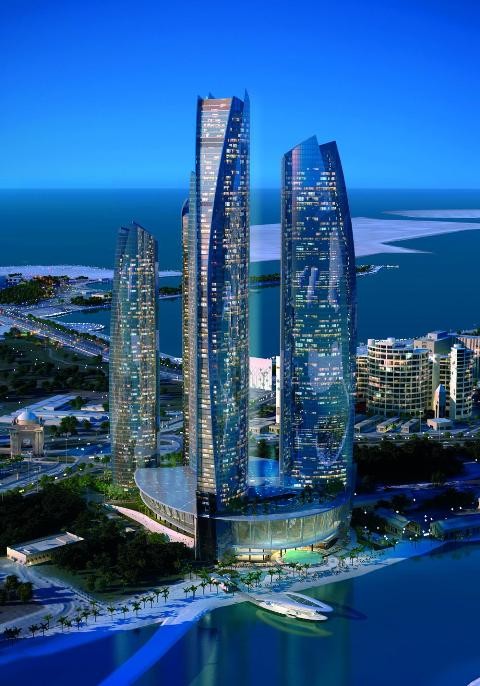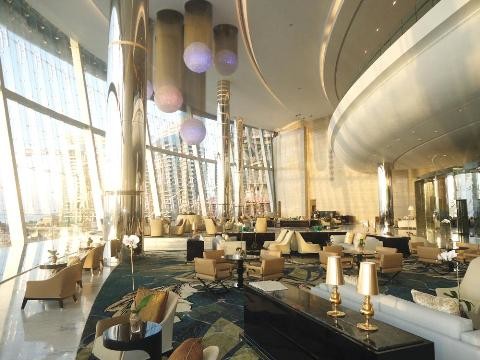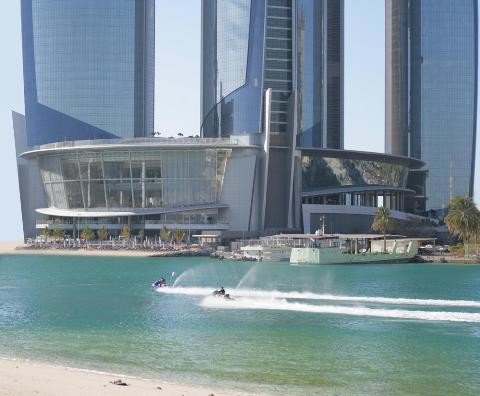Queensland-based architects, DBI Design, has recently completed the US$1 billion Jumeirah at Etihad Towers (pictured above and below) development in Abu Dhabi — the company’s largest logistical project to date.
Carrying out the vast majority of architecture, interior, landscape design and engineering work from Brisbane (not based in Abu Dhabi), the company largely manages its international projects remotely.
DBI Design’s major international projects include the Sheraton Mandara in Jakarta, Indonesia; Yihwa — Marriott Hotel, residential towers and Convention Centre in Taipei; and the Boao Forum for Asia — a major mixed use development including three hotels, a 3,000 seat convention centre, residential development and golf course in Hainan, China.
Architecture & Design spoke to Warren Coyle, managing director at DBI Design, about the challenges and benefits of working on international projects remotely.
What are the main challenges of managing a project remotely?
Communications, in general, become a major focus in the management of remote projects. The time difference and working week difference are particularly significant. For example, with the UAE six hours behind Queensland and a working week of Sunday to Thursday — this means an effective working week overlap of only 10 hours between UAE and Australia.
Aside from the time differences, an acute awareness of cultural differences and a sensitivity to the client’s working methodology is extremely important. On the technical side there is also the need for in-depth research into local conditions. For example, geotechnical conditions, climate, wind, planning and building codes. In some countries multiple building codes are adopted, which often causes conflict and redundancy.
Overriding all of the above issues, there is the task of co-ordinating a large and diverse team of specialist consultants located both locally and remotely. There is no simple solution — it requires a significant increase in workload for the project team to manage a remote project.
What are some of the solutions to help with those challenges?
In terms of communications, the use of video conferencing, FTP sites for document transfer, email and internet become essential tools in management of the project. Even so, there is a need to be on duty virtually 24/7 to maintain a short turnaround time on important discussions impacting on the design, documentation and execution of the project.
A strong local consultant team in the project’s location is also vital. Such consultants provide essential input on climatic data, geotechnical conditions, planning and building regulations. DBI also typically sets up a local project office at the site for client interface, co-ordination of local consultants and for liaison with authorities and the building contractor.
 What are the advantages of working remotely?
What are the advantages of working remotely?
Undertaking remote projects is a great opportunity to broaden horizons and develop project experience and to operate at an international level. The competition is certainly more intensive as there are generally several large-scale international consultants competing for major projects.
On a commercial level, DBI balances exposure to local and international projects on a 50/50 basis. This helps the office to cater with market fluctuations in any particular market segment or location. The participation in international projects raises the firm’s profile and provides a significantly increased level of expertise to the firm and its staff, making them better equipped to handle more complex and sophisticated projects, both locally and internationally.
 Do you think remotely managing projects is a common occurrence in the industry? Will it continue?
Do you think remotely managing projects is a common occurrence in the industry? Will it continue?
Australian and Queensland architects are increasingly being recognised for their strong capabilities in design and delivery of projects overseas. Whereas these projects may have traditionally gone to the major design firms from, say, the USA or UK, we now see Australian firms competing at all levels of international design.
There is also recognition of our ability in the provision of innovative, contemporary design. Coupled with Australian’s innately practical nature, there is a growing client appreciation and acceptance of our talents. Therefore there are many opportunities for our architects and designers to compete in the international arena.
 Images: DBI Design via WAN
Images: DBI Design via WAN

